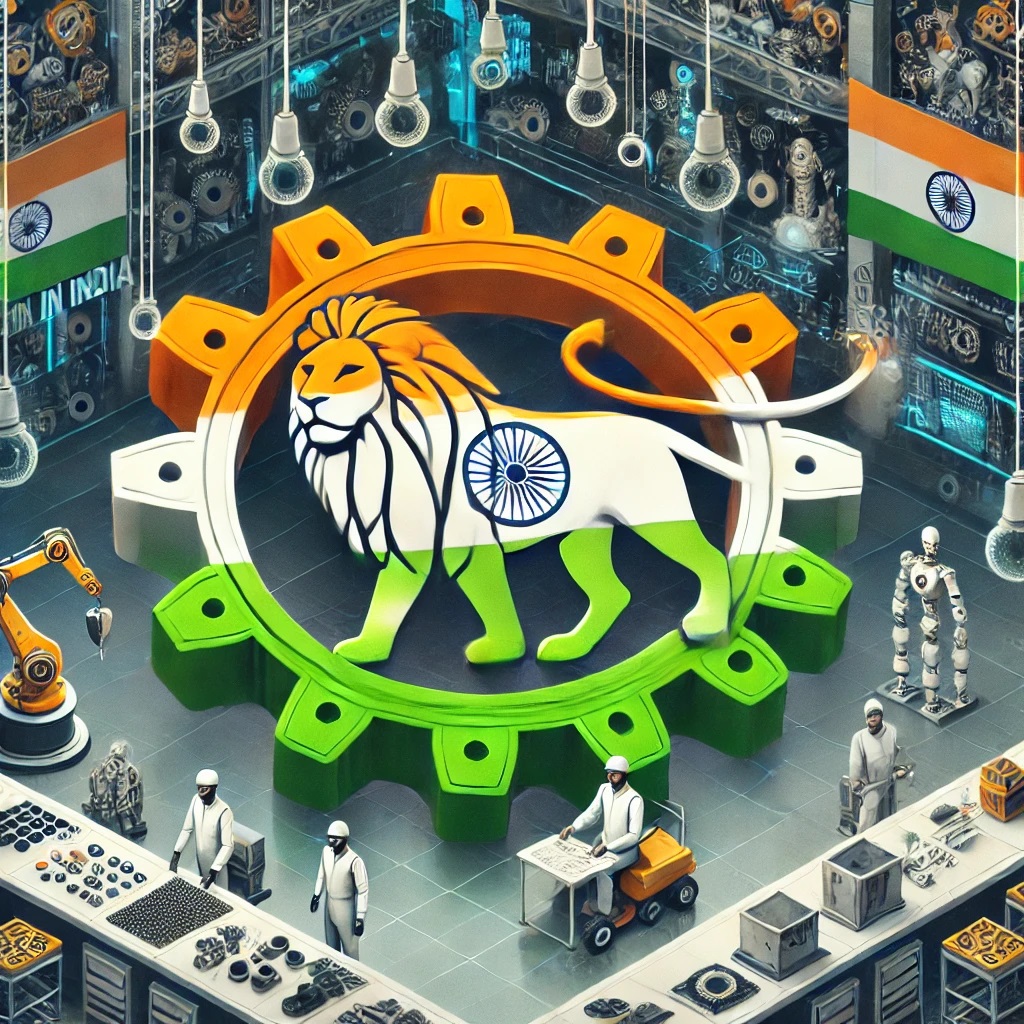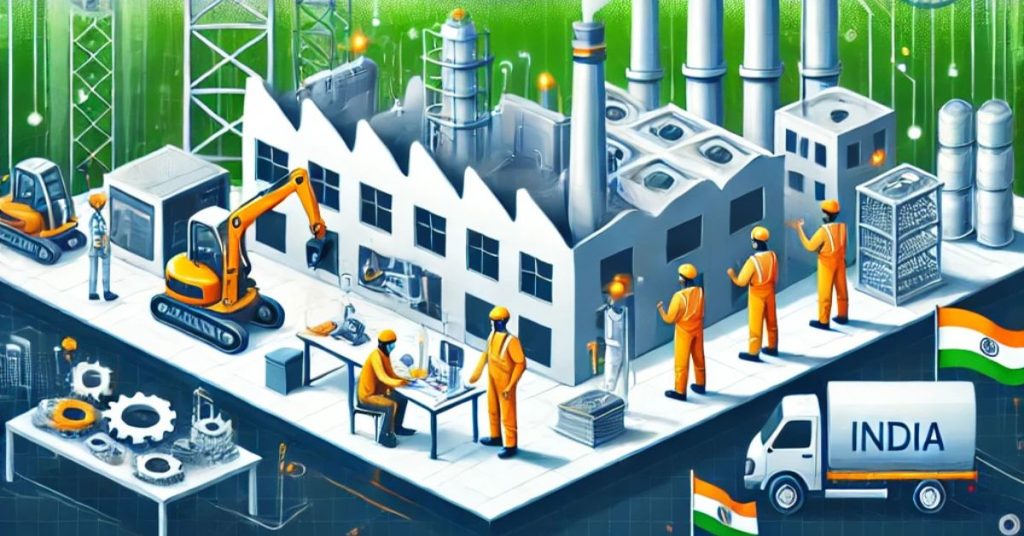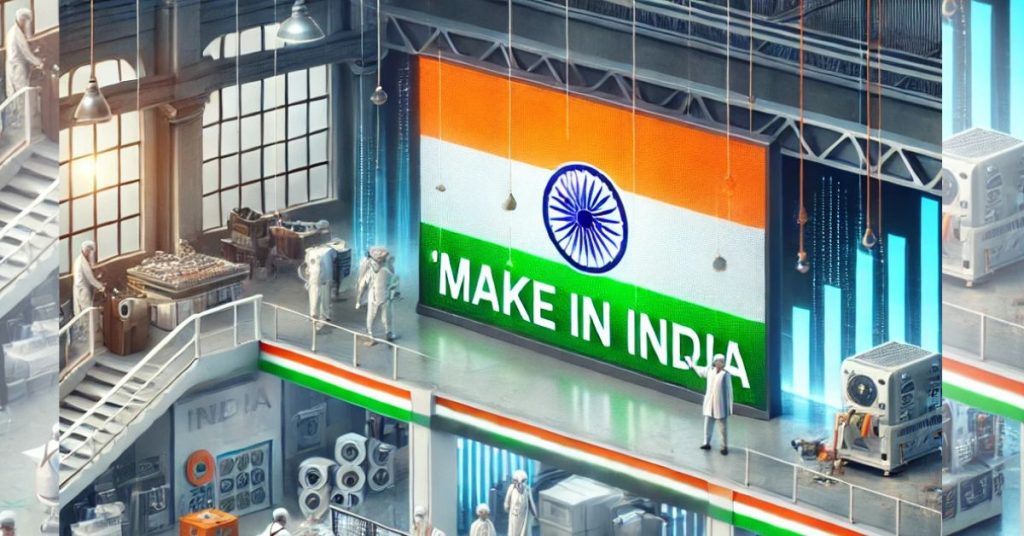“Make in India” is a campaign launched by the Indian government in 2014. The goal is to encourage companies to manufacture their products in India instead of importing them from other countries. This initiative aims to create more jobs, strengthen the economy, and make India a global hub for manufacturing.
However, like any major program, Make in India has both positive and negative sides. In this blog, we will discuss the advantages and disadvantages of Make in India.
Advantages of Make in India
1. More Job Opportunities
One of the biggest benefits of Make in India is that it creates jobs. When factories and industries are set up, they need workers. This helps reduce unemployment, especially for young people. More jobs mean that more families can earn a steady income and improve their quality of life.
2. Boosts the Indian Economy
Manufacturing more products in India helps grow the country’s economy. When goods are made and sold in India, more money stays in the country. This increases the country’s GDP (Gross Domestic Product), which is a measure of how strong the economy is.
3. Encourages Foreign Investment
Make in India attracts foreign companies to invest in Indian businesses and industries. These investments bring in money, advanced technology, and better production methods. It also helps India build a strong reputation in the global market.
4. Helps Local Businesses
When big industries set up factories, they need raw materials and services from smaller businesses. This helps small and medium-sized businesses grow. Local suppliers, transport companies, and service providers all benefit from Make in India.
5. Better Infrastructure Development
Industries need good roads, electricity, water supply, and transportation. With Make in India, the government has focused on improving these facilities. This not only helps businesses but also makes life easier for people living in cities and villages.
6. Brings Advanced Technology
When foreign companies invest in India, they bring the latest technology and production methods. This helps Indian industries improve the quality of their products and increase efficiency. Workers also get a chance to learn new skills, making them more valuable in the job market.
7. Reduces Dependence on Imports
If India produces more goods locally, it does not have to buy them from other countries. This helps save foreign currency and makes India more self-reliant. Depending too much on imports can be risky, especially during international conflicts or economic crises.
8. Increases Exports
If India can manufacture high-quality products at a lower cost, it can export them to other countries. This brings more income to the country and improves India’s position in the global trade market. More exports mean a stronger economy and better opportunities for businesses.
9. Encourages Startups and New Businesses
The government has introduced several policies to support new businesses under the Make in India initiative. It is now easier for people to start manufacturing businesses, get financial help, and register their companies. This has encouraged more entrepreneurs to enter the market.
10. Strengthens National Security
Producing defense equipment, electronics, and other essential products in India reduces dependence on foreign countries. This makes India stronger in terms of national security and ensures that the country has control over important resources.

Disadvantages of Make in India
1. High Costs for Businesses
Setting up a factory or industry requires a lot of money. Businesses need to buy land, purchase machines, and train workers. These costs can be very high, making it difficult for small businesses to compete with large corporations.
2. Environmental Problems
More factories and industries mean more pollution. Factories release harmful gases into the air and waste into rivers, damaging the environment. Deforestation (cutting down trees) for industrial purposes can lead to climate change and loss of wildlife.
3. Overuse of Natural Resources
Factories need water, electricity, and raw materials to function. If industries consume too many resources, it can lead to shortages for other important sectors like agriculture. Overuse of resources can also harm future generations.
4. Shortage of Skilled Workers
Even though Make in India creates job opportunities, many industries require skilled workers. India still lacks enough training centers and institutions that teach advanced technical skills. Without proper training, workers may not be able to meet industry standards.
5. Risk of Worker Exploitation
Some industries may try to cut costs by paying workers very low wages and making them work in poor conditions. If proper labor laws are not enforced, workers may suffer from low pay, long working hours, and unsafe workplaces.
6. Tough Competition for Local Businesses
Foreign companies coming to India bring better technology, management, and resources. This makes it harder for Indian companies to compete. Some small businesses may struggle to survive against these big multinational corporations.
7. Focus on Manufacturing Over Other Sectors
While manufacturing is important, India also has strong sectors like agriculture, tourism, and IT services. If too much focus is given to manufacturing, other industries might not get the attention and investment they need to grow.
8. Delays Due to Bureaucracy
Even though the government has made policies to support Make in India, businesses still face delays due to long approval processes. Getting permits for land, environmental clearances, and licenses can take a long time. This discourages investors and slows down industrial growth.
9. Unequal Development
Industries are mostly set up in cities and developed states like Maharashtra, Gujarat, and Tamil Nadu. Rural areas and less-developed states do not benefit as much from Make in India. This creates an imbalance where some regions develop quickly while others remain poor.
10. Dependence on Foreign Companies
Although Make in India promotes local manufacturing, many foreign companies are involved in the process. If these companies decide to leave India due to political or economic reasons, it could cause major financial losses and job cuts.
Conclusion
Make in India is a powerful initiative with many benefits. It helps create jobs, strengthens the economy, and reduces dependence on foreign goods. It encourages foreign investment, improves infrastructure, and promotes exports.
However, there are also challenges. High costs, environmental damage, overuse of resources, and competition from foreign companies are some of the drawbacks. The government needs to focus on sustainable development, strong labor laws, and proper skill training to make the program successful.
If implemented properly, Make in India has the potential to transform the country into a global manufacturing leader. However, careful planning and execution are necessary to ensure that economic growth does not come at the cost of environmental and social problems.
Also Read:
- Who is Make in India Brand Ambassador?
- Challenges of Make in India
- Public Procurement Preference to Make in India Order 2017
Frequently Asked Questions
What is the goal of Make in India?
Make in India aims to boost manufacturing in India by encouraging businesses to produce goods locally. It helps create jobs, attract foreign investments, and strengthen the economy. The goal is to make India a global manufacturing hub and reduce dependence on imports from other countries.
How does Make in India create jobs?
When factories and industries are set up, they need workers for production, management, and services. This creates employment for skilled and unskilled workers. Small businesses supplying raw materials also benefit, leading to more job opportunities in different sectors like transport, packaging, and customer service.
What are the main benefits of Make in India?
Make in India helps increase employment, improves infrastructure, attracts foreign investments, and reduces dependence on imported goods. It also supports local businesses, increases exports, and strengthens India’s economy. The initiative aims to make India a leader in global manufacturing and technological advancements.
What are the challenges of Make in India?
Some challenges include high costs for businesses, environmental damage, lack of skilled workers, and competition from foreign companies. Bureaucratic delays in getting approvals also slow down industrial growth. Additionally, industries are mostly set up in cities, leaving rural areas with fewer development opportunities.
How does Make in India help small businesses?
Small businesses benefit because big industries need suppliers for raw materials, packaging, and transport. The initiative also promotes entrepreneurship by making it easier to start a business. Government support, financial assistance, and better infrastructure help small and medium businesses grow in the manufacturing sector.
What are the advantages of Make in India?
Make in India creates jobs, boosts economic growth, attracts foreign investments, and improves infrastructure. It encourages local businesses, promotes exports, and brings advanced technology to the country. The initiative also helps India become self-reliant by reducing dependence on imported products and strengthening the manufacturing sector.
What are the disadvantages of Make in India?
The initiative faces challenges like high business costs, environmental pollution, overuse of natural resources, and lack of skilled workers. Bureaucratic delays, tough competition for local businesses, and regional development imbalances also pose problems. Some industries may exploit workers, paying low wages and providing poor working conditions.




